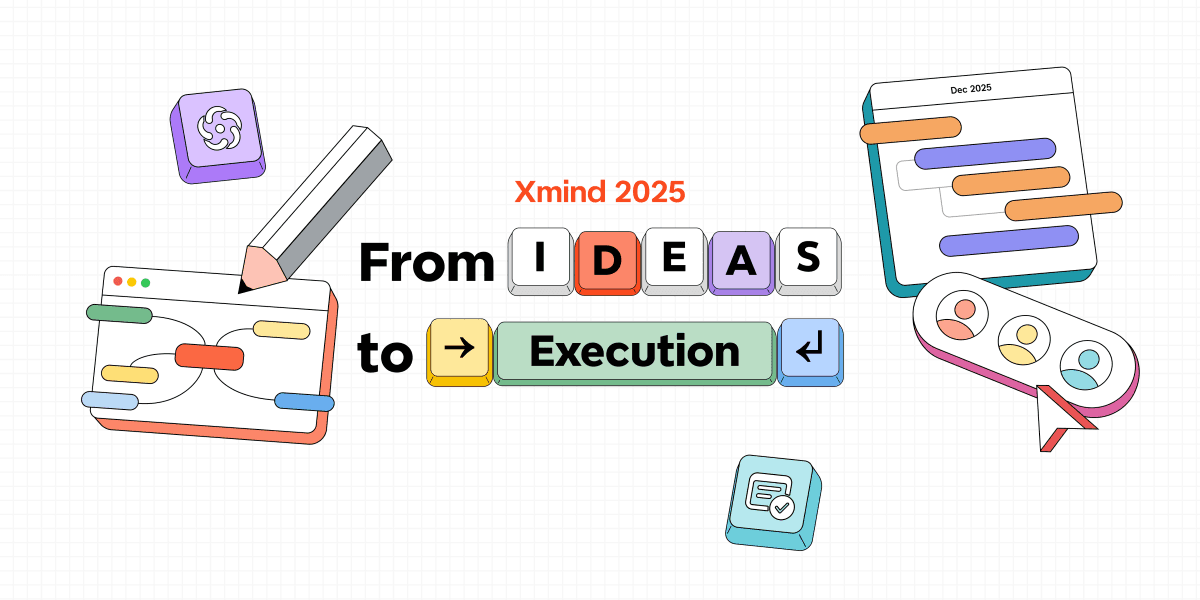16 sept 2025
La Guía para Principiantes sobre la Gestión de Proyectos Scrum
La gestión de proyectos con Scrum no es simplemente otro proceso que se te pide seguir; es una forma de entregar valor de manera constante y predecible. El ritmo de iteraciones cortas, un objetivo claro para cada ciclo y bucles de retroalimentación honesta ayudan a los equipos a entregar incrementos utilizables sin perder de vista el panorama general. Si tus proyectos se sienten como un juego de whack-a-mole — requisitos que cambian, prioridades que colisionan, interesados pidiendo actualizaciones — scrum crea una cadencia que trae orden al ruido.
Este artículo mantiene las cosas prácticas. Explicaremos las ideas fundamentales detrás de scrum, los roles que encontrarás y los eventos y artefactos que mantienen a un equipo en movimiento. También analizaremos el panorama de herramientas para que sepas qué esperar del “software Scrum”. Luego, trabajaremos con un tutorial completo y paso a paso sobre el sprint en Xmind, un espacio de trabajo visual que transforma la planificación, discusión y revisión en un mapa vivo.
¿Qué es la Gestión de Proyectos con Scrum?
Scrum es uno de los marcos más utilizados dentro de la familia Agile. Mientras Agile describe un conjunto de valores y principios, Scrum ofrece una manera concreta de practicarlos — con roles específicos, periodos de tiempo y artefactos. En lugar de ciclos de planificación largos que a menudo no reflejan la realidad, Scrum divide el trabajo en partes más pequeñas y manejables que pueden adaptarse al cambio.
En su esencia, la gestión de proyectos con Scrum trata sobre iteración, retroalimentación y mejora. Los equipos planifican para un período corto (llamado sprint), entregan un incremento de producto funcional y luego revisan tanto el resultado como el proceso. Este ritmo asegura que el progreso sea visible y el aprendizaje continuo.
Scrum vs Agile: diferencias clave explicadas
Agile es la filosofía; Scrum es una forma de vivirla. Para hacer la distinción más clara, aquí tienes una comparación simple:
Aspecto | Agile (Filosofía) | Scrum (Marco) |
|---|---|---|
Definición | Un conjunto de valores y principios expuestos en el Manifiesto Agile | Un método específico para aplicar los valores Agile en proyectos |
Alcance | Amplio — cubre muchas prácticas (Scrum, Kanban, XP, Lean) | Estrecho — se centra en sprints, roles y ceremonias |
Flexibilidad | Los equipos interpretan los principios a su manera | Proporciona guías concretas y eventos |
Duración | Iteración continua, no requiere un ciclo estricto | Sprints de duración fija (generalmente de 1 a 4 semanas) |
Roles | No están estrictamente definidos | Product Owner, Scrum Master, Developers |
Resultado | Software funcional entregado frecuentemente | Un incremento utilizable al final de cada sprint |
Esta tabla muestra por qué Agile a menudo se describe como la “mentalidad”, mientras que Scrum es el “manual de jugadas”.
Metodología Scrum en la gestión de proyectos
Scrum introduce un ciclo claro y repetible en el trabajo del proyecto:
Product Backlog — una lista única y ordenada de todo en lo que el equipo podría trabajar. Los elementos pueden ser épicas, historias o errores.
Planificación del Sprint — el equipo elige qué elementos del backlog abordar, establece un Objetivo del Sprint y crea un Backlog del Sprint.
Ejecución del Sprint — generalmente 2 semanas de trabajo enfocado. El equipo se autoorganiza para entregar elementos que cumplan con la Definición de Hecho.
Daily Scrum — una reunión corta y de tiempo limitado donde el equipo se sincroniza y elimina bloqueos.
Revisión del Sprint — los interesados ven el incremento funcional, proporcionan retroalimentación y ajustan prioridades.
Retrospectiva del Sprint — el equipo reflexiona sobre cómo trabajaron juntos y realiza mejoras para el próximo sprint.
Este ciclo se repite hasta que el producto satisface las necesidades del mercado o se completa. Cada iteración no solo agrega funciones utilizables sino que también reduce la incertidumbre, porque la retroalimentación guía los siguientes pasos.
Por qué Scrum es ideal para proyectos complejos
Los proyectos complejos rara vez salen como se planearon. Los requisitos cambian, las necesidades del cliente evolucionan y surgen problemas imprevistos. Scrum está diseñado para manejar este tipo de incertidumbre:
Bucles de retroalimentación cortos significan que los riesgos se descubren temprano en lugar de meses después.
Transparencia mantiene a todos alineados — el progreso y los impedimentos son visibles tanto para el equipo como para los interesados.
Adaptabilidad garantiza que las prioridades se puedan reordenar sprint por sprint, sin descarrilar todo el plan de ruta.
Equipos empoderados pueden tomar decisiones locales, lo que acelera la entrega en comparación con esperar aprobaciones de arriba hacia abajo.
Ejemplo: Una startup fintech que construye una plataforma de pagos no puede conocer todos los requisitos de cumplimiento de antemano. Al ejecutar sprints de dos semanas, el equipo entrega características en partes (inicio de sesión, vinculación de cuentas, historial de transacciones), luego se adapta cuando los reguladores solicitan cambios. Scrum les permite seguir entregando mientras se ajustan a nuevas reglas.
En contraste, un plan de proyecto rígido escrito con meses de anticipación se volvería rápidamente obsoleto. Scrum prospera en estas condiciones exactamente: alta incertidumbre, dependencias complejas y la necesidad de un aprendizaje rápido.
Los Roles Principales en un Equipo Scrum
Scrum master vs Project manager: ¿quién hace qué?
Un Scrum Master no es un mini-gerente. Entrenan al equipo en Scrum, eliminan impedimentos y mejoran el sistema. Un Project Manager (en contextos no Scrum) a menudo es responsable del alcance, el cronograma y los informes. En Scrum, las responsabilidades se distribuyen: el equipo se autogestiona mientras el Scrum Master cultiva el proceso.
El papel del Product Owner
El Product Owner es responsable del valor. Mantiene el Product Backlog ordenado, define criterios de aceptación y articula el Objetivo del Sprint. Los buenos Product Owners dicen “no” tan a menudo como “sí” — no para bloquear el progreso, sino para proteger el enfoque.
Responsabilidades del equipo de desarrollo
Los Developers (a veces llamados el equipo de desarrollo) convierten los elementos del backlog en un incremento realizado y utilizable. Ellos seleccionan cuánto trabajo asumir, determinan el “cómo”, y colaboran a diario para llevarlo a cabo. La autogestión es el punto: las decisiones viven lo más cerca posible del trabajo.
Eventos y Artefactos de Scrum Explicados
Planificación del sprint, daily scrum y retrospectives
Planificación del Sprint establece el objetivo y selecciona el trabajo.
Daily Scrum (una reunión rápida de pie) hace una sincronización sobre el progreso y los obstáculos.
Revisión del Sprint muestra el incremento a los interesados para recibir retroalimentación.
Retrospectiva del Sprint analiza internamente para mejorar cómo trabaja el equipo.
Entendiendo el product y sprint backlog
El Product Backlog enumera todo lo que podría agregar valor. Permanece ordenado y transparente. El Sprint Backlog es el compromiso del equipo para este sprint: elementos seleccionados más un plan para entregarlos.
¿Qué es un incremento y definición de hecho?
Un Increment es la suma del trabajo terminado que es potencialmente entregable. La Definición de Hecho es tu nivel de calidad — criterios compartidos que indican a todos cuándo un elemento está realmente completo.
Software de Gestión de Proyectos Scrum Recomendado
Características clave a buscar en software Scrum
Gestión del backlog con ordenación, etiquetado y edición rápida.
Soporte de planificación del sprint (vistas de capacidad, puntos de historia o dimensionamiento relativo).
Visibilidad: paneles, gráficos de reducción y señales de estado claras.
Colaboración: comentarios, menciones y notificaciones que no sobrecargan.
Integración con código, documentos y chat.
Flexibilidad para reflejar tu flujo de trabajo (ningún equipo trabaja exactamente igual).
Comparando herramientas Scrum populares en el mercado
El ecosistema de software Scrum es amplio y ninguna herramienta sirve igual a todos los equipos. Algunas están construidas para la gestión de programas a gran escala empresarial, mientras que otras brillan en grupos más pequeños y dinámicos. Aquí un vistazo más de cerca a las herramientas de software más populares y cómo se adaptan a los flujos de trabajo Scrum:
Jira
Una de las herramientas Scrum más usadas ampliamente, Jira está diseñada pensando en equipos de desarrollo de software. Proporciona tableros de sprint robustos, gestión del backlog, informes detallados e integraciones con repositorios de código. Jira es altamente personalizable, lo que lo hace poderoso para organizaciones de ingeniería complejas, aunque puede resultar pesado para equipos más pequeños o no técnicos.
Azure DevOps
Azure DevOps está estrechamente vinculado al ecosistema de Microsoft. Combina tableros Scrum con pipelines de CI/CD, repositorios y paneles avanzados. Los equipos que ya dependen de Azure o Visual Studio lo encuentran a menudo un ajuste natural. Al igual que Jira, es rico en funciones pero puede requerir una configuración significativa, lo que lo hace más adecuado para grandes empresas que para startups ágiles.
ClickUp
Posicionado como un espacio de trabajo todo en uno, ClickUp admite tableros Scrum, metas, documentos y paneles en una sola plataforma. Su flexibilidad permite a los equipos ejecutar Scrum junto con otros métodos de proyecto. Esa amplitud es atractiva para organizaciones que buscan un único centro para la gestión del trabajo, pero la abundancia de opciones puede resultar abrumadora al principio.
Trello
Trello es conocido por su simplicidad. Con listas y tarjetas que pueden adaptarse fácilmente a tableros Scrum, es accesible para equipos más pequeños o proyectos no técnicos. Aunque carece de informes específicos de Scrum integrados, su naturaleza visual y baja curva de aprendizaje lo hacen favorito para equipos de marketing, startups o cualquier persona que desee un punto de entrada ligero.
Asana
Ubicado entre la facilidad de Trello y la complejidad de Jira, Asana equilibra usabilidad con estructura. Ofrece tableros, líneas de tiempo y dependencias de tareas en una interfaz limpia que funciona bien para equipos multifuncionales. Para organizaciones que desean aplicar prácticas de Scrum sin lidiar con la complejidad de las herramientas, Asana proporciona un buen punto intermedio.
Xmind
Donde la mayoría de las herramientas Scrum se centran en seguimiento y ejecución, Xmind enfatiza claridad en el pensamiento y planificación. Ofrece a los equipos una forma visual de capturar ideas, explorar opciones y organizar información compleja antes de comprometerla a un backlog de sprint. En la práctica, los equipos usan Xmind para estructurar conversaciones tempranas, alinearse en torno a objetivos y detectar riesgos. Su fortaleza radica en transformar una lluvia de ideas desordenada en mapas claros y compartibles que complementan a cualquier rastreador de problemas que el equipo ya use.
Usando Xmind para Planificar Tu Primer Sprint de Scrum
A continuación, un tutorial paso a paso que refleja una configuración real de sprint. Todos los nombres de características siguen la terminología oficial de Xmind.
Paso 1: Captura y estructura tu backlog
Crea un nuevo mapa. Comienza de cero y nombra el tema central según tu producto o proyecto.
Empieza rápido con IA. Usa el Brainstorming Hub para crear ideas de backlog. Un aviso como “Generar historias de usuario para una aplicación de colaboración en equipo” puede producir rápidamente sugerencias de épicas e historias para refinar.
Expande el contenido en el Mapa. Agrega cualquier historia de usuario adicional, errores o tareas directamente como temas en el mapa. Mantenlos cortos y consistentes.
Revisa en Outline. Cambia a Outline cuando quieras una lectura lineal del backlog. Esto facilita escanear, reordenar o preparar para discusión, mientras las ediciones permanecen sincronizadas con el mapa.
Organiza visualmente. Aplica Etiquetas (por ejemplo, “frontend”, “API”, “seguridad”) y agrega Marcadores para mostrar prioridad o progreso. Durante el triage del backlog, usa Resaltar Temas Relacionados para enfocar la atención del equipo en “candidatos para el Sprint 1”.
Un único, estructurado backlog donde los temas están etiquetados, las prioridades son visibles y el equipo puede concentrarse solo en los candidatos para este sprint.
Paso 2: Prioriza y selecciona el alcance del Sprint
Con el backlog capturado, el siguiente paso es decidir qué elementos entrarán en el sprint. En Xmind, puedes resaltar, estructurar y separar prioridades de maneras que mantengan el mapa claro y accionable:
Promueve elementos clave del backlog a nuevas hojas. Para subtemas importantes (ej., Flujo de pago o Inicio de sesión móvil), haz clic derecho y selecciona Nueva Hoja desde Tema. Esto crea una Hoja dedicada donde puedes expandir detalles, asegurando que los temas principales no se pierdan en un backlog abarrotado.
Convierte historias críticas en tareas. Aplica configuraciones de Tarea a nodos importantes, agregando fechas de inicio y vencimiento, prioridad y estado de finalización. Esto transforma entradas del backlog en elementos del sprint accionables, facilitando el seguimiento del progreso una vez que comienza el sprint.
Combina múltiples estructuras en un mapa. Usa diferentes estructuras en ramas separadas para ver prioridades desde múltiples ángulos:
Divide los flujos de trabajo con múltiples hojas. Si tu equipo está ejecutando pistas paralelas (por ejemplo, “Lanzar características de la versión 1.2” vs. “Arreglos de estabilidad”), crea Hojas adicionales en el mismo archivo. Cada Hoja puede representar un alcance de sprint distinto, mientras mantiene todo junto en un solo lugar.
Finalmente, una porción clara y priorizada que puedes entregar realmente dentro del marco de tiempo de tu sprint, con una segunda Hoja opcional para trabajo adyacente.
Paso 3: Secuencia hitos y asigna responsabilidades
Diseña tu calendario de sprint. Cambia la estructura de la rama de sprint a Cronograma. Agrega las fechas de inicio y fin del sprint, el punto de control a mitad del sprint, la demostración y la liberación. Adjunta cada historia seleccionada bajo el timebox correcto.
Clarifica responsabilidades. Agrega una rama de Organigrama que lista roles y nombres del equipo — ej., Developers, QA, Comunicaciones de Lanzamiento. Debajo de cada persona, anida las historias o tareas que poseen.
Mantén el enfoque en discusiones. Durante la planificación, alterna Resaltar Temas Relacionados en cualquier historia o flujo que estés debatiendo para que las ramas secundarias desaparezcan en el fondo.
Por lo tanto, un plan secuenciado en el tiempo donde las responsabilidades y dependencias son visibles, no enterradas en hilos de comentarios.
Paso 4: Prepárate para riesgos e incógnitas
Genera una rama de riesgos. Crea un Tema Flotante llamado “Riesgos & Causas”.
Cambia la estructura a Espina de Pescado. Úsala para mapear fuentes probables de problemas — por ejemplo: Requisitos, Tecnología, Personas, Ambiente, Proceso.
Adjunta mitigaciones. Agrega subtemas para maneras de reducir cada riesgo.
Referencia cruzada historias de alto riesgo. Usa Enlace de Tema desde los elementos de riesgo de regreso a las historias afectadas en tu Cronograma para que los riesgos se mantengan conectados al plan real.
Has capturado la conversación de “lo que podría salir mal” en una estructura diseñada para el pensamiento de causa raíz.
Paso 5: Ejecuta el sprint desde el mismo mapa
Usa el mapa en los daily stand-ups. Abre el Cronograma del sprint, luego aplica Resaltar Temas Relacionados para filtrar por “Hoy” o “Bloqueado”.
Actualiza el progreso en la Tarea Planificada. Abre los elementos de Tarea Planificada directamente en el mapa y ajusta su progreso, prioridad o fechas límite. De esta manera, las actualizaciones suceden en contexto — no hay necesidad de revisar múltiples tableros.
Rastrea bloqueadores. Sigue las líneas de Enlace de Tema para ver dependencias aguas arriba, luego salta a esos temas para desbloquear.
El mapa actúa como una cabina compartida. Todos pueden ver el plan, el estado y el “por qué” detrás de la secuenciación.
Paso 6: Comparte, presenta y mantén vivo
Presenta sin PowerPoint. Inicia Modo de Presentación para guiar a los interesados a través del plan y progreso del sprint. Cada diapositiva se genera a partir de los temas de tu mapa, manteniendo la historia consistente.
Comparte una vista en vivo. Haz clic en Compartir para generar un enlace al mapa para que los gerentes o equipos asociados puedan explorar interactivamente.
Exporta un instante. Usa Exportar (PDF/PNG/Markdown y más) para artefactos que necesiten vivir en un repositorio o ser adjuntados a tickets.
Colabora en línea. En equipos distribuidos, los miembros pueden coeditar y comentar en tiempo real sin instalar una aplicación de escritorio.
Tu plan de sprint, actualizaciones y materiales de revisión viven en un solo lugar; los costos de comunicación bajan porque no estás reconstruyendo la historia en otras herramientas.
Conclusión
La gestión de proyectos con Scrum funciona porque reduce la distancia entre la intención y el resultado. Haces un plan para una ventana corta, entregas un incremento real y escuchas, luego repites. El marco te da la estructura justa para mantener el impulso sin ahogarte en la ceremonia. Las herramientas también importan, especialmente en un mundo donde el trabajo ocurre a través de zonas horarias y la atención es escasa. La planificación visual en Xmind transforma las discusiones en algo compartible y duradero.
Si estás listo para convertir reuniones en movimiento hacia adelante, intenta construir tu próximo sprint con los pasos anteriores. Abre un nuevo mapa, bosqueja el esquema y observa qué tan rápido toma forma un plan.










